Eastbourne Railway Station
The single track branch line to Eastbourne from Polegate on the Brighton to Hastings line was opened by the London Brighton and South Coast Railway (LB&SCR) on 14 May 1849.[1] As the town became an ever more popular seaside resort two further stations followed: the first in 1866 and the present station, designed by F.D. Brick, in 1886. There was a rarely used triangular junction between Polegate and the now-closed Stone Cross which allowed trains to bypass the Branch; the track for this has now been lifted.
First station
Very little is known about the first station, except it was a timber structure and was used between 1849 and 1866 when the station building was moved to Wharf Road and became a dwelling for railway families. A new station was rebuilt. The location of the first station was said to be in Upperton Road, between the site of the current station and the Royal Mail sorting office. There is no record known on how many platforms the first station had.
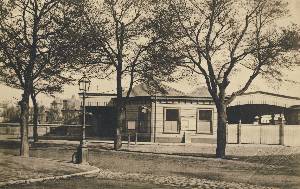


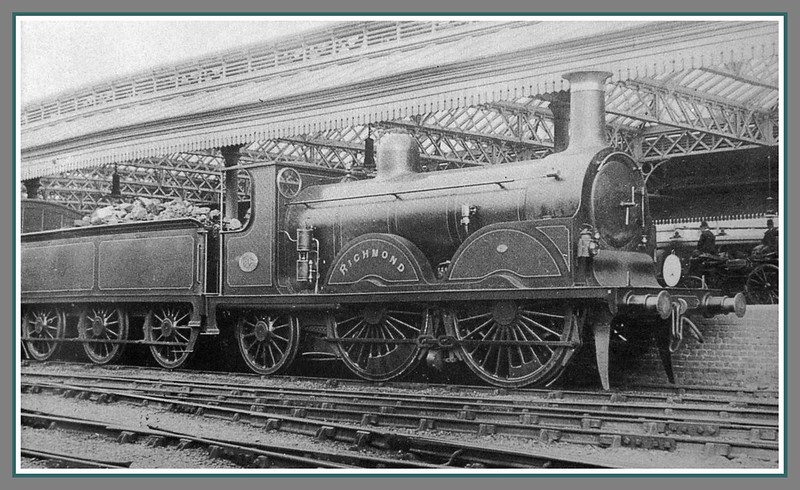
Between 1942 and 43 Eastbourne was the target of German 'hit and run' raiders, making it the most bombed town on the south coast. One of many attacks is the one on Wednesday 16th September 1942. About 11am an attack by just 2 FW190A’s both made for the railway station. Just one of these aircraft carried a large 500kg bomb slung under the fuselage. It fell on No. 1 platform. It then ricocheted into the ‘passenger dock’ where it exploded causing huge damage. The two aircraft then machine-gunned the local streets on their way out.
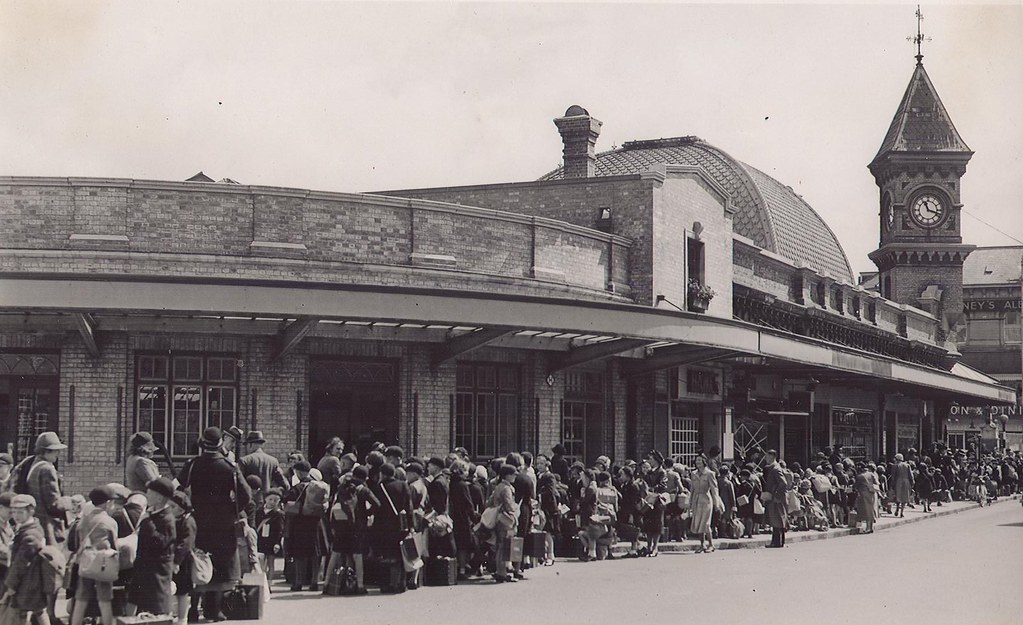
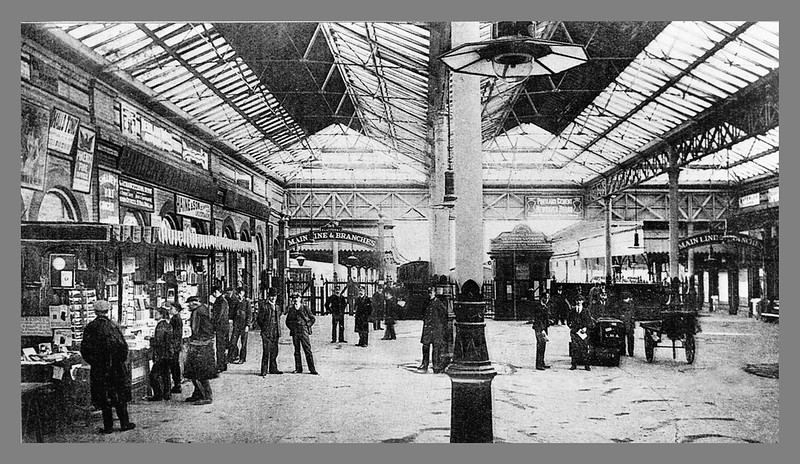
Present station
With the increase in services serving Eastbourne, now a popular resort, under LB&SCR Chief Engineer Frederick Banister a station was resited a little to the east in 1872 and rebuilt in 1886 and designed by F.D. Brick, in 1886.[2] which a vaulted canopy and lantern roof, similar to Lewes. The station had 4 platforms which increased in length over the years. There was also two run around loops between platforms 2 and 3. Over the years one of the runaround loops was lost as platforms 1 and 2 was built wider. On 12 April 1977 platform 4 was shortened from a 12 coach to an 8 coach length to make way for the ring road construction. And was taken out of use and the track lifted during the Eastbourne re-signalling in 1991
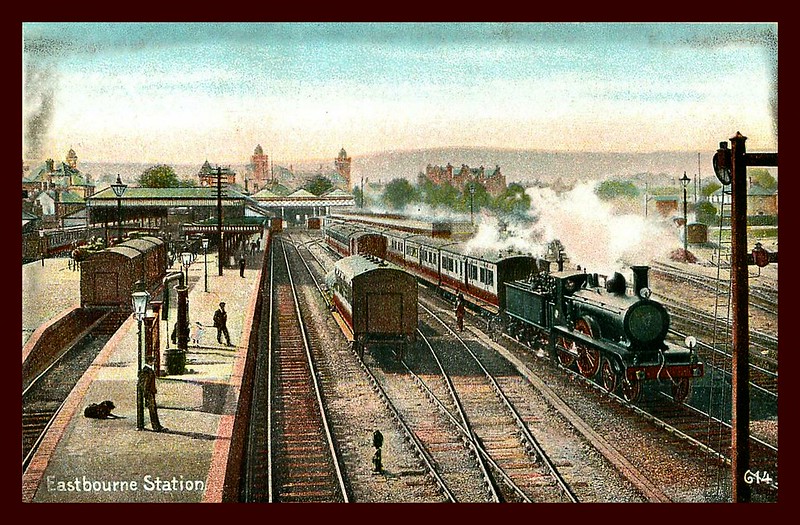
Goods station and yards
A goods station and yard was built north of the present station, on the site of the first station and was accessed from the mainline north of the station. Also to the north of the station was an extensive coal depot and industrial sidings including the Crumbles siding. The goods shed still survives today as the Enterprise Shopping Centre and the goods yard surrounding it is now the station car park. The coal sidings to the north of the station is now on the site of a car dealer.
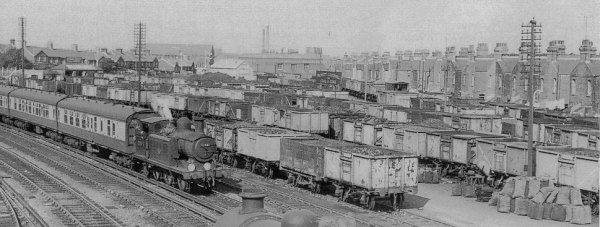
Locomotive depot
Eastbourne carriage sidings, May 2005. Site of the first engine shed
The LB&SCR opened a small engine shed in 1849 which was demolished in 1876. It was replaced by a semi-roundhouse in 1876, but this was demolished in 1912. A larger seven-road (seven track) shed was opened in 1911, but this was badly damaged by bombing in the Second World War and was never repaired. It closed in 1952, but the site continued to be used as a store for locomotives awaiting scrapping. Until 1965 when diesel locomotives were stored here until 1968 the shed was then demolished in 1969. Today the first engine shed is now occupied by the current carriage sidings, whilst the latter is now wastland.

Signal Box
The current signal box was built in 1882 and had an impressive 108 Lever frame controlling the station, goods yard and carriage sidings, this was later replaced on 14 November 1934 with a 72 lever frame. In 1991 the signal box was changed into a power signal box when the semaphore signals were replaced by colour light signals and an "entrance-exit" control system installed. However Network Rail plans to replace the signal box by 2021 with a new signalling centre at Three Bridges, which may leave the signal box here redundant..
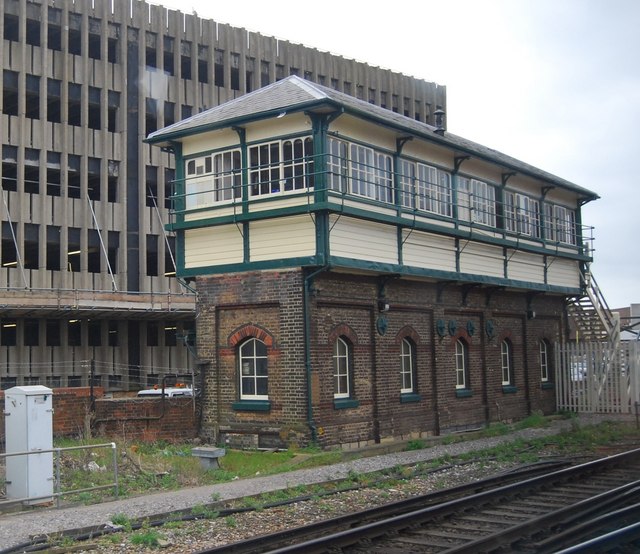
http://www.sidetrackedseries.info